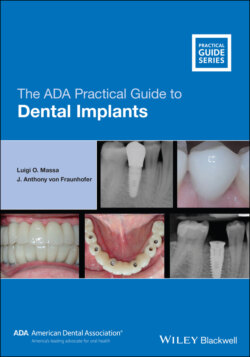Читать книгу The ADA Practical Guide to Dental Implants - J. Anthony von Fraunhofer - Страница 18
2 A Brief History of Dental Implants
ОглавлениеDentistry has a venerable history in that prosthodontics has been practiced for several thousand years. Fine examples of dental bridgework dating from around 700 BCE were crafted by the Etruscans of Central Italy (now Tuscany) and fixed partial dentures are known to have been fabricated by the Maya of Central America as far back as 700 CE [1–4]. There are many well‐known figures in history, for example, Queen Elizabeth I of England, King Henry II of France, George Washington of the United States and Winston Churchill of the United Kingdom, all of whom either wore removable partial dentures (RPDs) or complete dentures (CDs) [3].
The “father” of dentistry is generally acknowledged to be the French physician Pierre Fauchard (1678–1761) [2] whereas most historians and dentists credit Dr. Greene Vardiman Black (1836–1915) [2, 5, 6] as the “father of modern dentistry.” There are a number of other pioneers in dentistry, including the illustrious Scottish surgeon John Hunter, an early advocate of careful observation and scientific observation in medicine. Not only did Hunter collaborate with his former student Edward Jenner, the pioneer of the smallpox vaccine, but he also dabbled (unsuccessfully) with transplanting teeth, possibly following on from the work of Ambroise Paré (1510–1590). Paré is recognized as the “Father of Modern Surgery” and, interestingly, as the “Foster Father of Dental Surgery.” Interestingly, Paré referred to transplanting of teeth as early as 1564.
Despite its venerable history, the greatest advances in dentistry have really only occurred within the latter half of the twentieth century and, notably, the past 50–60 years. Many influences have transformed dentistry from an ancient quasi‐craft into the evidence‐based technological science it is today, including the innovative work of early dental practitioners, advances in oral medicine, oral surgery and restorative dental techniques, together with an astonishing array of scientific and technology‐driven progress in dental science and dental biomaterials. Table 2.1 indicates a significant number of innovations that have changed modern dentistry, one of which is the endosseous dental implant.
Table 2.1 Innovations in dentistry and dental care.
| Acrylic resin Adhesive dentistry Air‐turbine handpieces |
| Bowen's resin Computer‐aided designed/computer‐aided manufactured restorations Chromium‐cobalt casting alloys Composite restorative materials Cosmetic dentistry Dental Amalgam Digital radiography |
| Direct bonding of orthodontic brackets |
| Electric high‐torque/high‐speed handpieces Endodontic therapy |
| Endosseous oral implants |
| Fluoride‐containing dentifrices |
| Glass ionomers High‐strength dental ceramics |
| Mechanical toothbrushes |
| Orthognathic surgery |
| Porcelain fused to metal restorations Silver‐palladium alloys Visible light‐cured restorative materials Water fluoridation |
The confluence of the advances in the basic sciences, dental biomaterials and clinical technique possibly reached their apex in the endosseous dental implant, perhaps the most successful dental restorative technique ever devised. Virtually no other dental procedure has achieved the long‐term success rate found over the past 15–20 years with dental implants.
